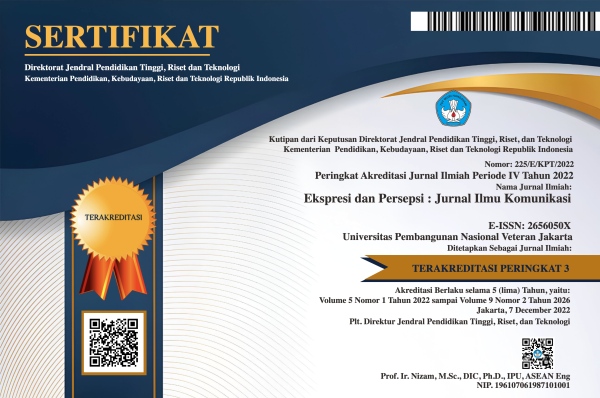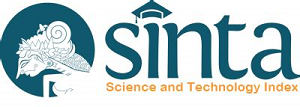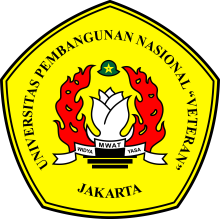Elimination of Negative Stigma through the Use of Media Technology by Librarians with Blind Disabilities
DOI:
https://doi.org/10.33822/jep.v7i1.6705Keywords:
blind librarian, media technology, negative stigmaAbstract
This research examines the efforts of librarians with visual disabilities to remove negative stigma from society. Research focus on the use of technological media by librarians with visual disabilities to eliminate the negative stigma towards blind people who are considered unable to use technological media. Previous studies agree that every librarian's activities require visual support in all their work. The use of technological media by librarians with disabilities is a social construction of technology as an effort to change social relations in society. This research aims to find out how the use of technological media by librarians with visual disabilities in eliminating the negative stigma. This research uses a qualitative methodology with a case study approach. Data collection techniques include observation and interviews. The data obtained is explained through the stages of data reduction, data presentation and verification. Librarians with visual disabilities have the skills to operate technological media with the help of special software for blind people. Skills in using technological media are demonstrated to users who come to the library. Skills in using technological media supported by special software are demonstrated by blind librarians to users with the aim of changing the negative stigma that assumes that people with disabilities cannot use technological media in their activities. The use of technological media by librarians with disabilities is a socio-technological construction and an adaptation strategy to change their relationship with the social environment.
References
Adiba, S., Febriyanto, S. R., & Afidhan, S. (2019). Disabilitas Netra dalam Berliterasi Informasi. Jurnal Perpustakaan Pertanian, 28(1).
Agustin, M. R. A., Rahimia, N., Hasyim, M. M., Rosetia, J. R., & Kurniawati, M. F. (2023). Pola Komunikasi Interpresonal Kelaurag dalam Pemulihan Kesehatan Mentap Penyintas Covid-19 tahun 2020. Ekspresi Dan Persepsi : Jurnal Ilmu Komunikasi, 6(1).
Akhsan, F., & Ramadhana, M. R. (2020). Motif Komunikasi Bermedia pada Penyandang Disabilitas (Studi pada Penyandang Disabilitas Netra yang Menggunakan Instagram). E-Proceeding of Management, 7(2).
Aqilla, M. A., & Sariningsih, Y. (2022). Kemampuan Disabilitas Netra Dalam Memanfaatkan Sumber Media Pembelajaran Di Balai Rehabilitasi. Jurnal Ilmu Kesejahteraan Sosial HUMANITAS, IV.
Arifin, M., & Widyasono, H. (2020). Studi Komparasi Negara Indonesia Dengan Negara Lain Tentang Pemanfaatan Teknologi Dalam Pendidikan Khusus Menggunakan Studi Komparasi Teknologi Asistif Negara Maju dan Berbasis Literasi. BEST Journal (Biology Education, Sains and Technology), 3(1).
Bannett, J. W. (1976). The Ecological Transition: Cultural Anthropology and Human Adaptation. Pergamon Press.
Bhavna, S. P., Christy, B., Sulthana, S., & Reddy, P. (2021). The Usefulness of Computer Assistive Technology for Persons with Visual Impairment. Indian Journal of Public Health Research & Development, 12(1). https://doi.org/10.37506/ijphrd.v12i1.13890
Branham, S. M., & Kane, S. K. (2015). The Invisible Work of Accessibility. Proceedings of the 17th International ACM SIGACCESS Conference on Computers & Accessibility - ASSETS ’15, 163–171. https://doi.org/10.1145/2700648.2809864
Bulk, L. Y., Smith, A., Nimmon, L., & Jarus, T. (2020). A closer look at opportunities for blind adults: Impacts of stigmatization and ocularcentrism. British Journal of Visual Impairment, 38(3), 270–283. https://doi.org/10.1177/0264619620911424
Bungin, B. (2008). Analisis Data Penelitian Kualitatif. Raja Grafindo Persada.
Hidayat, L. (2020). Assistive Technology pada Aplikasi Android untuk Tunanetra. Jurnal Pendidikan Luar Biasa, 1(2).
Huai-bin, X. (2005). Social Construction of Technology: Theoretical Discussion and Policy Implication. Journal of Northeastern University.
Klein, H. K., & Kleinman, D. L. (2002). The Social Construction of Technology: Structural Considerations. Science Technology Human Values, 27(1).
Krishna, S., & Panchanathan, S. (2010). Assistive Technologies as Effective Mediators in Interpersonal Social Interactions for Persons with Visual Disability. Computers Helping People with Special Needs, 316–323.
Mulyani, K., Sharul, M., & Ramdoni, A. (2022). Ragam Diskriminasi Penyandang Disabilitas Fisik Tunggal Dalam Dunia Kerja. KHIDMAT SOSIAL: Journal of Social Work and Social Services, 3(1).
Oti-Sarpong, K., & Leiringer, R. (2021). International technology transfer through projects: A social construction of technology perspective. International Journal of Project Management, 39(8).
Undang Undang Republik Indonesia Nomor 8 Tahun 2016 tentang Penyandang Disabilitas, (2016).
Qanita, N. M. (2023). Strategi Penyebaran Informasi Oleh Diskominfo Jabar Melalui Aplikasi “Si Votun” kepada Penyandang Disabilitas Tunantera. Ekspresi Dan Persepsi : Jurnal Ilmu Komunikasi, 6(1).
Rachmaningtyas, A. (2013, October 29). Penyandang tunanetra di Indonesia alami diskriminasi. Sindonews. https://nasional.sindonews.com/berita/799806/15/penyandang-tunanetra-di-indonesia-alami-diskriminasi
Robertson, G. (2016). Our vision of things: Basic eye care for librarians. In Robertson on Library Security and Disaster Planning (pp. 13–17). Elsevier. https://doi.org/10.1016/B978-0-08-100077-9.00002-6
Sugiyono. (2015). Memahami Penelitian Kualitatif. Alfabeta.
Suomi, R., & Sachdeva, N. (2016). Internet Accessibility for Visually Impaired. In Encyclopedia of E-Health and Telemedicine (pp. 250–259). IGI Global. https://doi.org/10.4018/978-1-4666-9978-6.ch021
Tanto, A. R., & Malau, R. M. U. (2020). Analisis Literasi Digital Guru Penyandang Tunantera di Sekolah Luar Biasa Negeri A Pajajaran Kota Bandung. Ekspresi Dan Persepsi : Jurnal Ilmu Komunikasi, 5(2).
Wahidin, H., Waycott, J., & Baker, S. (2018). The challenges in adopting assistive technologies in the workplace for people with visual impairments. Proceedings of the 30th Australian Conference on Computer-Human Interaction, 432–442. https://doi.org/10.1145/3292147.3292175
Widiyawati, A. T. (2019). Kajian Literasi Media Digital Library Universitas Brawijaya (Studi Kasus pada Mahasiswa Tuna Netra Universitas Brawijaya). Tik Ilmeu : Jurnal Ilmu Perpustakaan Dan Informasi, 3(1), 1. https://doi.org/10.29240/tik.v3i1.617
Yusainy, C., Slamet, T., & Gustomy, R. (2016). #StopAbleism: Reduksi Stigma kepada Penyandang Disabilitas melalui Intervensi Bias Implisit. Jurnal Psikologi, 43(1).
Downloads
Published
Issue
Section
License
Copyright (c) 2024 Gustiana Sabarina, Rahmat Alifin Valentino, Alwan Husni Ramdani

This work is licensed under a Creative Commons Attribution-NonCommercial 4.0 International License.














